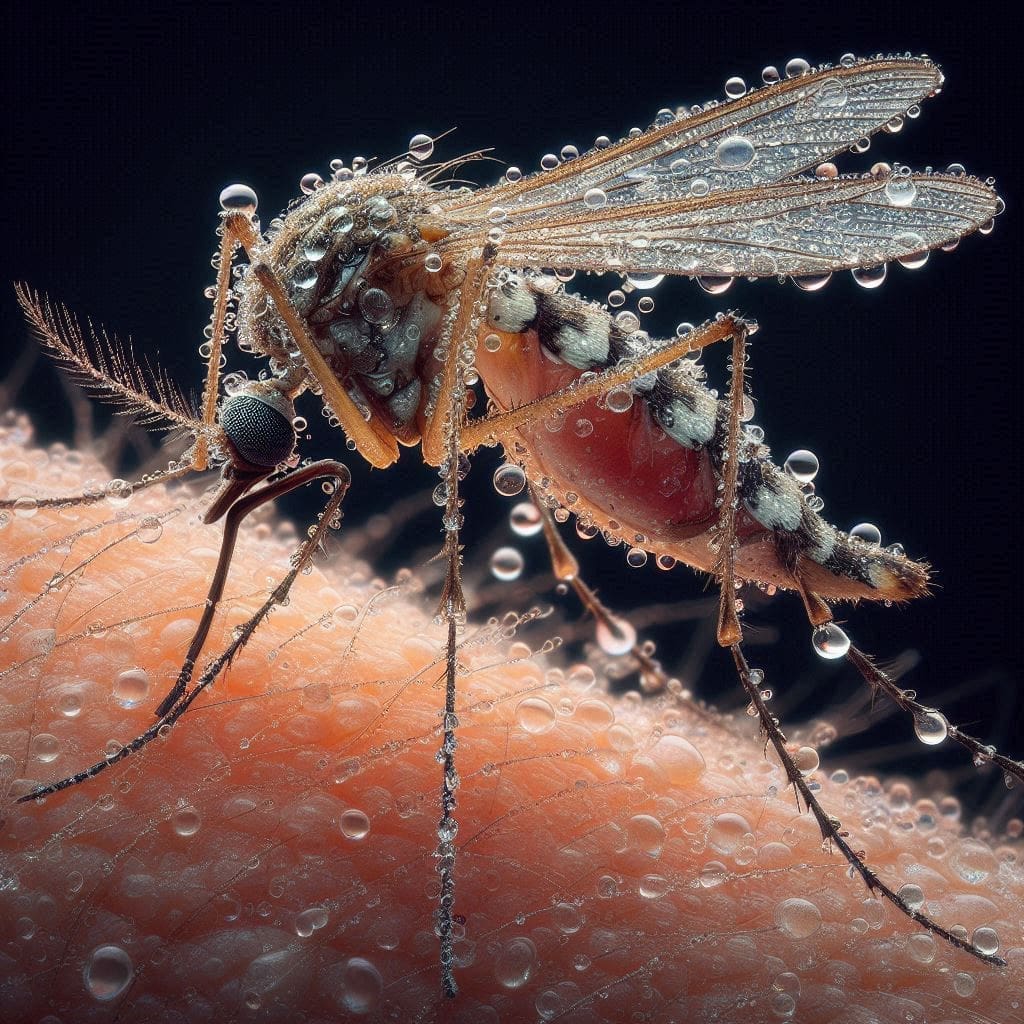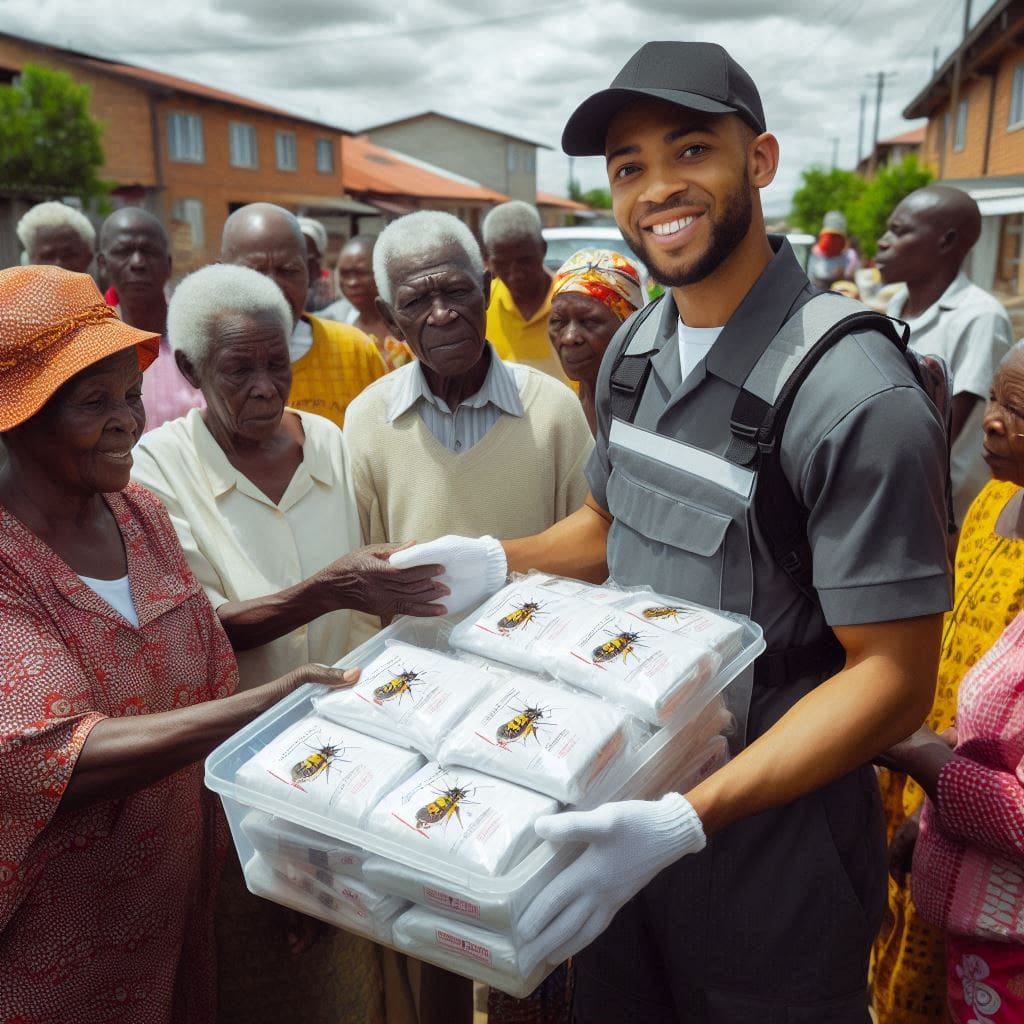Introduction

Malaria is a life-threatening disease caused by parasites transmitted to people through the bites of infected female Anopheles mosquitoes.
In Nigeria, malaria is a significant public health issue, contributing to considerable morbidity and mortality, particularly among children under five and pregnant women.
Understanding how to prevent, recognize, and treat malaria is crucial for safeguarding health and well-being.
Understanding Malaria
What is Malaria?
Malaria is a parasitic infection primarily caused by four types of Plasmodium parasites: Plasmodium falciparum, P. vivax, P. ovale, and P. malariae. In Nigeria, Plasmodium falciparum is the most prevalent and deadly strain.
The disease is endemic in many regions due to favorable environmental conditions for mosquito breeding, including warm temperatures, stagnant water, and high humidity.
Transmission
Malaria is transmitted through the bite of an infected female Anopheles mosquito. When the mosquito bites a human, it injects Plasmodium parasites into the bloodstream.
These parasites travel to the liver, where they mature and reproduce. After a period, they re-enter the bloodstream and infect red blood cells, leading to the symptoms of malaria.
Prevention of Malaria
Vector Control
- Insecticide-Treated Nets (ITNs)
- Sleeping under ITNs is one of the most effective ways to prevent malaria. These nets are treated with insecticides that kill mosquitoes on contact.
- Ensure the net is properly tucked under the mattress to avoid mosquitoes entering.
- Indoor Residual Spraying (IRS)
- This involves spraying the interior walls of homes with long-lasting insecticides. IRS can significantly reduce the mosquito population.
- It is particularly effective when conducted in a coordinated manner across communities.
- Environmental Management
- Reducing mosquito breeding sites by eliminating stagnant water sources, such as old tires, cans, and uncovered water containers.
- Promoting proper waste disposal and drainage systems.
Personal Protection
- Use of Mosquito Repellents
- Applying repellents containing DEET, picaridin, or oil of lemon eucalyptus on exposed skin and clothing.
- Wearing Protective Clothing
- Wearing long-sleeved shirts and long pants, especially during evening and nighttime when mosquitoes are most active.
- Screening Homes
- Installing screens on windows and doors to prevent mosquitoes from entering homes.
Chemoprophylaxis
- Preventive Medications
- For people traveling to high-risk areas, prophylactic antimalarial drugs such as atovaquone-proguanil, doxycycline, or mefloquine may be recommended.
- Pregnant women in malaria-endemic areas may be prescribed intermittent preventive treatment with sulfadoxine-pyrimethamine (IPTp-SP).
Vaccination
- Malaria Vaccine
- The RTS,S/AS01 (Mosquirix) vaccine has been shown to provide partial protection against Plasmodium falciparum malaria in young children.
- The vaccine is currently being introduced in selected regions and may become more widely available in the future.
Symptoms of Malaria
Initial Symptoms
The initial symptoms of malaria are often similar to those of the flu and can include:
- Fever
- Chills
- Headache
- Muscle aches
- Fatigue
These symptoms typically appear 10 to 15 days after being bitten by an infected mosquito.
Progression of Symptoms
If left untreated, malaria can progress and lead to more severe symptoms, such as:
- High fever
- Profuse sweating
- Severe headache
- Nausea and vomiting
- Abdominal pain
- Diarrhea
- Anemia (due to the destruction of red blood cells)
- Jaundice (yellowing of the skin and eyes)
Severe Malaria
In some cases, malaria can progress to severe or complicated malaria, which is life-threatening and requires urgent medical attention. Symptoms of severe malaria include:
- Confusion, seizures, or coma (cerebral malaria)
- Severe anemia
- Acute respiratory distress syndrome (ARDS)
- Kidney failure
- Cardiovascular collapse (shock)
- Multi-organ failure
Diagnosis of Malaria
Clinical Diagnosis
- Symptom Check
- Healthcare providers will evaluate symptoms and consider the patient’s travel history and exposure to mosquito bites.
- Physical Examination
- Checking for signs such as fever, enlarged spleen, or jaundice.
Laboratory Diagnosis
- Microscopy
- A blood smear is examined under a microscope to detect the presence of Plasmodium parasites and determine the species and parasite density.
- Rapid Diagnostic Tests (RDTs)
- These tests detect specific antigens produced by malaria parasites and provide results in 15-30 minutes. RDTs are particularly useful in areas with limited laboratory facilities.
- Polymerase Chain Reaction (PCR)
- PCR tests can detect low levels of parasites and identify species but are typically used in reference laboratories due to higher costs and complexity.
Treatment of Malaria
Uncomplicated Malaria
- First-Line Treatment
- Artemisinin-based Combination Therapies (ACTs)
- ACTs are the most effective treatment for Plasmodium falciparum malaria. They combine artemisinin or its derivatives with another antimalarial drug to enhance efficacy and reduce resistance.
- Common ACTs include artemether-lumefantrine, artesunate-amodiaquine, and dihydroartemisinin-piperaquine.
- Artemisinin-based Combination Therapies (ACTs)
- Follow Prescribed Dosage
- It is crucial to complete the full course of treatment even if symptoms improve before finishing the medication to ensure all parasites are eliminated and prevent resistance.
- Supportive Care
- Managing fever with antipyretics like paracetamol and ensuring adequate hydration.
Severe Malaria
- Hospitalization
- Severe malaria requires hospitalization and intensive medical care.
- Intravenous (IV) Medications
- IV Artesunate
- Preferred treatment for severe malaria due to its rapid action and effectiveness.
- IV Quinine or IV Quinidine
- Alternative treatments where IV artesunate is not available.
- IV Artesunate
- Supportive Care
- Intensive monitoring and supportive treatments, including blood transfusions for severe anemia, respiratory support for ARDS, and renal dialysis if necessary.
Prevention and Management Strategies in Nigeria
Community Engagement
- Education and Awareness
- Community health education programs to raise awareness about malaria prevention, symptoms, and treatment.
- Encouraging the use of ITNs and promoting environmental management practices.
- Community Health Workers
- Training community health workers to provide basic malaria education, distribute ITNs, and assist in the early detection and referral of malaria cases.

Government and NGO Initiatives
- National Malaria Control Programs
- Government initiatives aimed at reducing the malaria burden through mass distribution of ITNs, IRS campaigns, and access to affordable malaria treatment.
- Partnerships with NGOs
- Collaborations with non-governmental organizations to implement malaria control and prevention programs, particularly in rural and hard-to-reach areas.
Personal Responsibility
- Proactive Health Measures
- Individuals should take personal responsibility for using mosquito nets, repellents, and seeking prompt treatment if malaria symptoms arise.
- Regular Health Check-ups
- Regular medical check-ups, especially during and after the rainy season, to ensure early detection and treatment of malaria.
Challenges in Malaria Control
Drug Resistance
- Emergence of Resistance
- Resistance to antimalarial drugs, particularly artemisinin, poses a significant challenge to malaria control.
- Combination Therapy
- Using ACTs helps to slow the development of resistance, but continuous monitoring and research are needed to develop new treatments.
Access to Healthcare
- Rural Areas
- Many rural areas in Nigeria face challenges in accessing healthcare facilities and services, leading to delays in diagnosis and treatment.
- Healthcare Infrastructure
- Strengthening healthcare infrastructure and ensuring the availability of diagnostic tools and medications is crucial for effective malaria control.
The Role of Technology
Mobile Health (mHealth)
- Health Information Systems
- Utilizing mobile phones and other digital tools to disseminate health information, track malaria cases, and remind individuals to take preventive measures.
- Telemedicine
- Telemedicine platforms can connect patients in remote areas with healthcare providers, facilitating timely diagnosis and treatment.
Conclusion
Malaria remains a major public health challenge in Nigeria, but with effective prevention, timely diagnosis, and proper treatment, it is possible to reduce the burden of this disease.
By adopting preventive measures such as using insecticide-treated nets, wearing protective clothing, and maintaining clean environments, individuals can significantly lower their risk of malaria.
Similarly, community engagement, government initiatives, and advancements in healthcare and technology are all crucial in the fight against malaria. Understanding the symptoms and seeking prompt medical attention are vital steps in ensuring better health outcomes for individuals and communities.
By staying informed and proactive, we can work together to combat malaria and improve the overall well-being of the Nigerian population.



